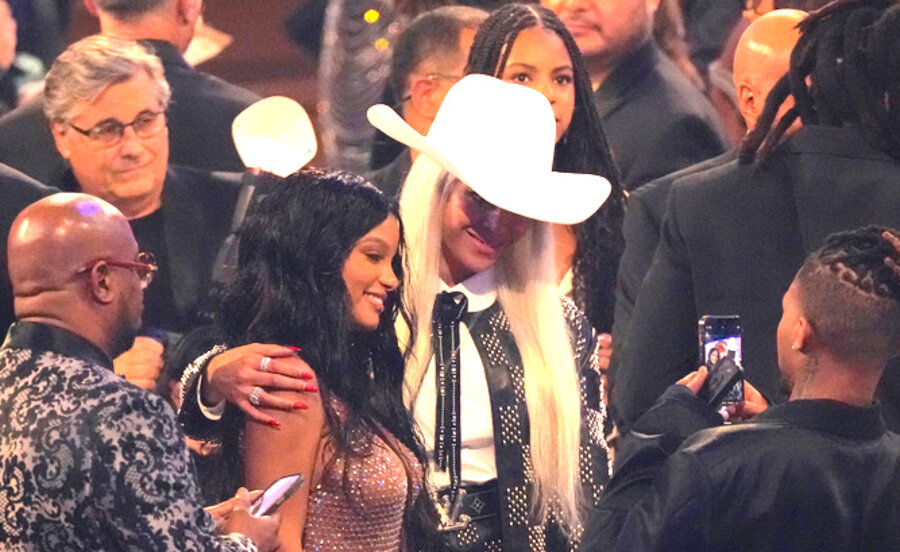Beyoncé takes country to high places
Loading...
The country music industry felt a bit of an earthquake when Beyoncé, who hails from Texas, dropped her long-anticipated album “Cowboy Carter” on March 29. (Her full name is Beyoncé Giselle Knowles-Carter.) While not all the songs are country music, the album nonetheless marks the formal entry of a prominent Black songwriter into a genre that has long depicted mainly white rural life.
Some fans of country have accused her of cultural appropriation. The album itself will serve as a response. It includes guest appearances by Willie Nelson and Dolly Parton, both country royalty. And the first notes Beyoncé shared with the public from "Cowboy Carter" signaled she isn’t dabbling in the genre’s traditions. The single “TEXAS HOLD ’EM,” released last month, opens with unadorned notes on a fretless banjo by Rhiannon Giddens, a prolific modern reclaimer of Black string band music.
That signals a deeper intention. Her album fits into a wider project of African Americans artists reclaiming stories once told by others or erased from history – through food, film, art, and literature. At a time when more societies are grappling with cultural diversities, such storytelling asserts that dignity is inherent to the individual expressing the story.
Art installations such as the Harlem Renaissance exhibit at the New York Metropolitan Museum of Art and Netflix documentaries about recovering Black Southern cuisine have caught the restorative and unifying effect of tenderness and empathy.
In his newly published collection of portraits across the South, for example, photographer Rahim Fortune includes an image of a man holding a broad-rimmed Stetson hat across his heart. Entitled “Praying Cowboy,” the photo is one of several capturing Black rodeo and horsemanship that neatly encapsulate an extraordinary turn underway in the telling of the American story.
“These images amplify the sense of communal love that can be found in rural southern communities,” Mr. Fortune told Vogue when he first published “Praying Cowboy” following the police killing of George Floyd in 2020. “We want these images to be a form of visual healing.”
Storytelling is the essential element of country, a genre that sprang from Scottish, Irish, and English musical traditions. Yet some of its core elements – the musical structure of the blues, lyrical narration, the banjo – can be traced back to enslaved Africans.
“Most of that history has been erased, some has been hidden and precious little has been acknowledged,” said Alice Randall, the first Black woman to write a song that reached No. 1 on the country music charts and author of a forthcoming book entitled “My Black Country.” The restoration of that history, she said in a 2020 interview with the Public Relations Society of America, involves “an essential aspect of being human and becoming humane.”
That reach for the universal aspects of music resides in the renaissance of Black storytelling to which Beyoncé has tuned her voice. As Eric Weisbard, a music historian, told The Economist, by turning her talents to a host of genres, Beyoncé shows she has “no limit artistically.”







